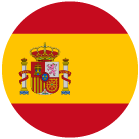Spanish Translation Services

Language History
The Spanish language derived from Vulgar Latin around 2000 years ago when it originated in the Iberian Peninsula. The region, which later became known as Hispania, was conquered by Islamic groups from Northern Africa called Moors. Arabic and a related dialect called Mozarabic was then widely spoken in Hispania before Christian kingdoms reconquered Moorish Spain, reclaiming the country as well as the language. Vulgar Latin became dominant and in the 1200’s, the standardized Spanish language was formed, based on a dialect called
Castilian. This dialect gained wide acceptance in Spain, becoming the written and educational standard in the country until this very day.
Source: alsintl.com
Languages of the IBERIAN PENINSULA
Alongside Castilian which is spoken by 99% of the population, the most prominent Spanish languages are Catalan (or Valencian) spoken by 17%, Galician by 7%, and Basque by 2% of the population.

Modern Spanish has over 4,000 words with Arabic roots. Spanish borrowed many words from Mozarabic, after the region was conquered by Islamic groups in AD 719.
Spanish is the official language in the following countries:
Puerto Rico, Argentina, Bolivia, Chile, Colombia,
Costa Rica, Cuba, Dominican Republic, Ecuador,
El Salvador, Equatorial Guinea, Guatemala,
Honduras, Mexico, Nicaragua, Panama,
Paraguay, Peru, Spain, Uruguay & Venezuela.
Differences in Spanish Dialects
Population vs. Internet Penetration
Population: 46,070,146
Internet Users: 40,148,353
Penetration: 87.1%
As of 2017. Source: www.internetworldstats.com
Did you know?
Spanish is one of the top 10 languages for mobile app localization.
Top Ten Spanish Speaking Countries of the World, 2014
Guess what ?
Within the next 50 years, Spanish is expected to be the first language of 50% of U.S population.
takelessons.com
Did you know?
Latin America is the 2nd fastest growing region in the world for game revenues.
newzoo.com
Spanish Words that have no English Translation
• Estrenar – To wear something for the first time
• Friolento/Friolero – A person who’s sensitive to cold
Punctuation Marks
Genders and Plurals
In Spanish, words always have gender and plural suffixes according to the core of a sentence:
In the following example, the core of the subject is “houses” in plural. “Houses” is plural and feminine in
Spanish, thus all the elements of the sentence will have to match these.
“These (plural) red (singular) houses (plural) are (plural) similar (singular)”
“Estas (plural, feminine) casas (plural, feminine) rojas (plural, feminine) son (plural) parecidas (plural,
feminine).”

Spanish Translation Tips
• Identify your target market – there are several regional
versions of Spanish and each one has variations in its
grammar, formalities and words.
• Spanish translations automatically become 30% longer and lengthier than its English
source text.
• Most nouns in Spanish such as objects and places have genders. E.g. objects that
end in -a are feminine, while those ending in -o are masculine.
• There are 6 different spellings for verb tenses while adjectives usually come after the
noun.
Guess what ?
www.internetworldstats.com






